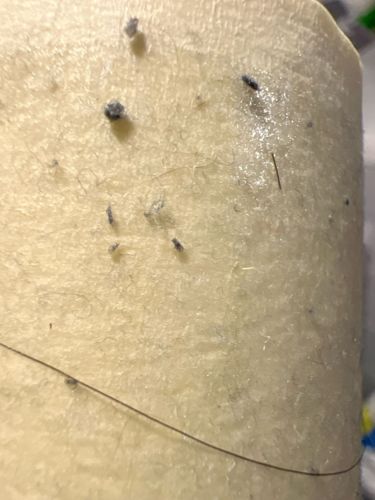Booklouse / Psocid
Scientific Name: Psocoptera (various species)
Order & Family: Order: Psocoptera, Family: Various (e.g., Liposcelididae, Psocidae)
Size: Typically 1-2 mm, some species can be up to 10 mm

Natural Habitat
Indoor environments, especially where there is high humidity (above 60-70%) and access to molds, fungi, starches, or other organic matter. Common in old books, stored foods, damp walls, bathrooms, and basements.
Diet & Feeding
Molds, fungi, algae, starch-based materials (e.g., book bindings, wallpaper paste, stored grains, cereal products), dead insects, and other organic debris. They do not bite humans or pets.
Behavior Patterns
Booklice are small, soft-bodied insects. Many species are wingless or have vestigial wings. They are often found in groups, scurrying around when disturbed. Their life cycle is relatively short, and they can reproduce quickly under ideal conditions (warm and humid). They are nocturnal and prefer dark, undisturbed areas.
Risks & Benefits
Risks: Can be a nuisance pest in homes and libraries, potentially damaging books, stored food products, and other starch-containing materials by feeding on mold that grows on them or the materials themselves. Some people may be allergic to their presence. Benefits: Generally considered harmless to humans directly as they do not bite or transmit diseases. They primarily act as decomposers, feeding on mold and other organic matter.
Identified on: 10/25/2025